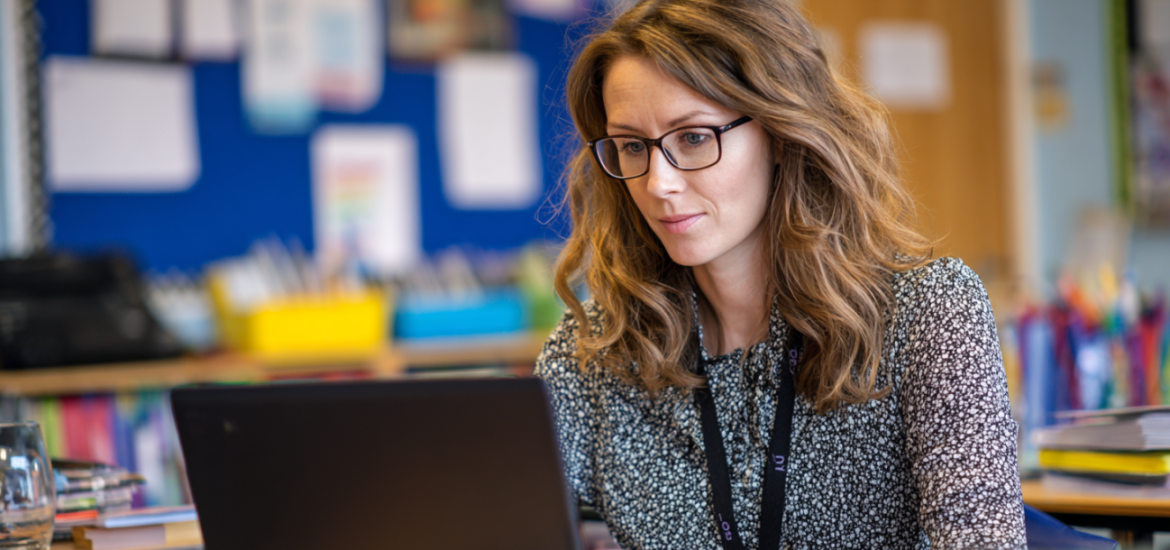Do you want to create lesson plans that actually help students learn and retain information? Effective lesson planning combines research-backed learning principles with practical classroom strategies.
Drawing from Uncommon Sense Teaching by Oakley, Rogowsky, and Sejnowski, successful lessons begin with concrete objectives, build on students’ existing knowledge, and include regular check-ins to gauge understanding. Jim Kwik’s SMART goals framework from Limitless offers another approach, helping teachers design lessons that are specific, measurable, and realistic for their students’ needs. Keep reading for explanations of each.
Making a Lesson Plan
In their book Uncommon Sense Teaching, Oakley, Rogowsky, and Sejnowski say that creating an effective learning environment starts with effective lesson plans. This includes having clear objectives, a lesson structure that supports how people naturally learn, and regular activities to assess students’ progress.
According to the authors, any lesson-planning process should begin with clear learning goals: the specific knowledge and skills your students should have by the end of the lesson. To make them engaging for students, instead of posting them as straightforward objectives, you might phrase them as questions the students should be able to answer or problems they should be able to solve by the end of class.
Once you know specifically what you’re going to teach, plan a lesson that will encourage students to connect what they learn to what they already know. Remember that adding to existing knowledge is much easier than trying to create completely new neural connections. For example, suppose you’re teaching a history lesson on segregation in the southern US. You could teach your students about legally-enforced segregation, then ask them to write a paragraph connecting it to a previous lesson about the US Civil War.
Oakley, Rogowsky, and Sejnowski add that assessments should be woven throughout instruction, rather than given only at the end of a unit. Note that these assessments don’t need to be tests or pop quizzes; they can also include activities like having students pair up to discuss a question, quick polls to learn your students’ thoughts on a particular subject, or simply observing their work and looking for any glaring weaknesses. With regular assessments like these, you’ll have a fairly good sense of how each student will do on the eventual end-of-unit test.
Finally, close out each class by encouraging your students to actively reflect upon what they’ve learned. For example, instead of summarizing what you taught that day, ask them to briefly explain what you taught and how it fits into what they already knew. This will help them to process and consolidate their knowledge, ensuring that it transfers into long-term memory.
(Shortform note: In The Only Study Guide You’ll Ever Need, Jade Bowler suggests two different approaches to reflecting on a class. The first method is to have students reduce a topic to its most fundamental points from memory, then compare their summary against their notes to see how well they remembered the topic. The second method, called “blurting,” means having students quickly write down everything they remember about the topic, then review their notes to see what they overlooked.)
Plan Lessons Using SMART Goals
One way to apply the authors’ principles to your lesson plans is by adapting the SMART goals framework, as laid out by Jim Kwik in Limitless. SMART is an acronym that describes the qualities of good goals: Specific, Measurable, Actionable, Realistic, and Time-based. Let’s briefly discuss how you could use each of those aspects to create an effective lesson plan.
Specific: Instead of vague objectives like “students will understand fractions,” use clear and concrete goals like “students will add fractions with different denominators using visual models.”
Measurable: Build in concrete ways to assess student progress, such as end-of-class discussions and weekly quizzes. Also, make sure to set clear benchmarks so you can tell whether your class is meeting your expectations. For example, one benchmark might be “the majority of the class should score at least 80% on this week’s quiz.”
Achievable: For each goal, clearly map out the steps you’ll take to achieve it. In other words, along with clear learning goals for each lesson, your plan should include the specific materials and tools you’ll use to teach that lesson. If you can’t come up with a comprehensive plan to reach a particular goal, then it’s probably not achievable.
Realistic: Set goals that challenge your students appropriately without overwhelming them. For example, being able to accurately describe the events of D-Day near the end of World War 2 might be an appropriate goal for a single lesson. On the other hand, summarizing the entire war would be more appropriate for an end-of-unit assessment, as nobody could reasonably expect to learn all of the major events in one day.
Time-bound: Set clear timeframes for how long each lesson and activity should take, as well as how many lessons you plan to spend on each topic. Also, establish deadlines for when students should be able to demonstrate their proficiency (whether by taking a test or completing some other type of project). Not only does this make sure you’re pacing your instruction appropriately, it also creates urgency for both you and your students to get through the lessons efficiently.
Learn More About Lesson Planning
If you want to dig even deeper into how to create an effective lesson plan, you can read the full guides to the books mentioned above.
